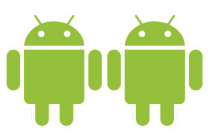Android forking?!?!?! DON'T PANIC!

So, Google has forked the Android open-source project ... but DON'T PANIC!
Android 3.0 'Honeycomb' - First look | Android 3.0 Image gallery

Here are the details as supplied by Xavier Ducrohet, Android SDK (Software Development Kit) Tech Lead:
Android 3.0 (Honeycomb) is a new version of the Android platform that is designed from the ground up for devices with larger screen sizes, particularly tablets. It introduces a new “holographic” UI theme and an interaction model that builds on the things people love about Android — multitasking, notifications, widgets, and others — and adds many new features as well.
Besides the user-facing features it offers, Android 3.0 is also specifically designed to give developers the tools and capabilities they need to create great applications for tablets and similar devices, together with the flexibility to adapt existing apps to the new UI while maintaining compatibility with earlier platform versions and other form-factors.
This sounds like something we should all panic over, right? More fragmentation. More versions. More confusion.
DON'T PANIC. Take a few deep breaths and read this:
Android 3.0 brings a new UI designed for tablets and other larger screen devices, but it also is fully compatible with applications developed for earlier versions of the platform, or for smaller screen sizes. Existing applications can seamlessly participate in the new holographic UI theme without code changes, by adding a single attribute in their manifest files. The platform emulates the Menu key, which is replaced by the overflow menu in the Action Bar in the new UI. Developers wanting to take fuller advantage of larger screen sizes can also create dedicated layouts and assets for larger screens and add them to their existing applications.
Personally, I think that this is a good move. Just as Apple allowed iOS to have iPhone and iPad apps, this allows developers to better cater for the platform they are targeting. Smartphone apps shouldn't look like tablet apps, and tablet apps should look like smartphone apps. This forking of Android makes sense.